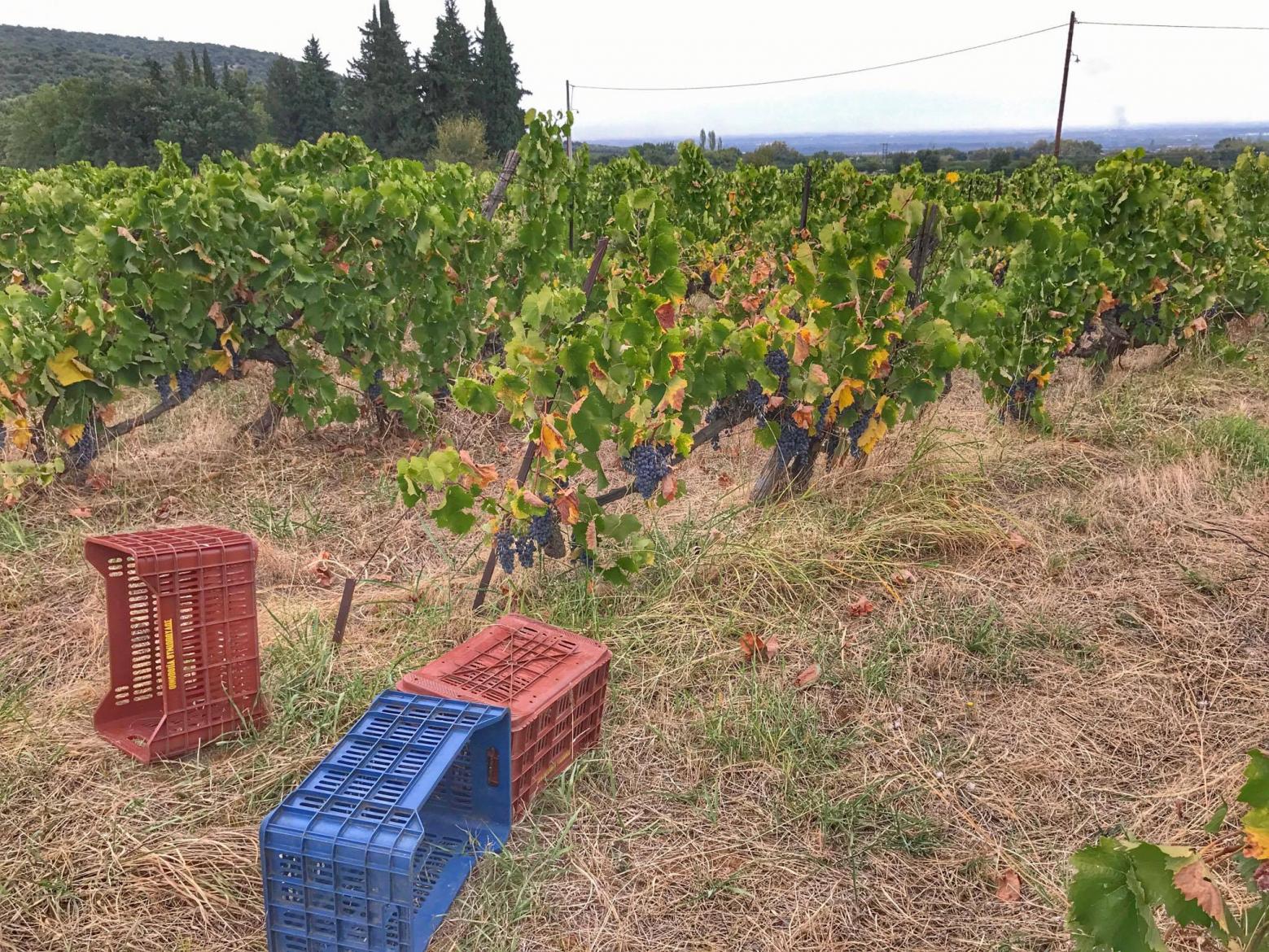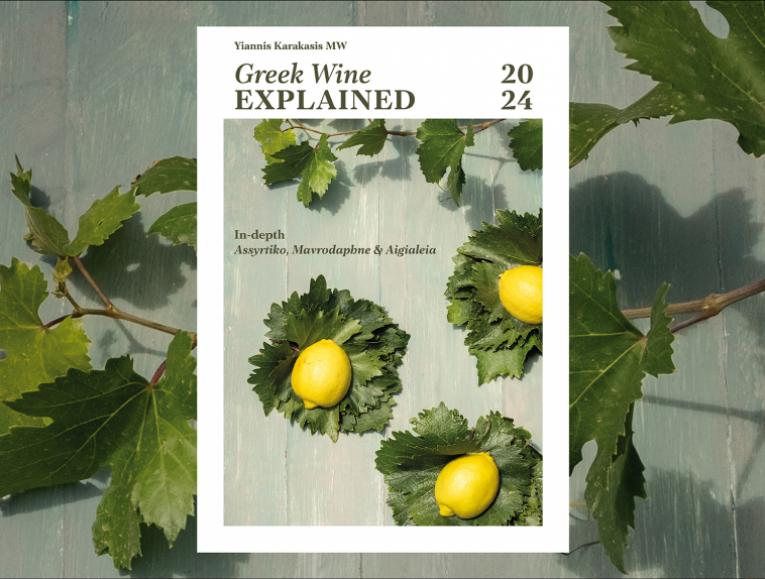Greek Harvest 2017: A vintage full of contradictions
The harvest is completed in the viticultural areas of Greece (except for some minor exceptions for specific styles of wine), so this feels like a good time to contemplate how this very unusual year affected the vines in the different regions.
"This year has been the cause of much discussion," says Stefanos Koundouras, the Professor of Viticulture at the Aristotelian University of Thessaloniki, "It started as a late harvest, but ended slightly prematurely," he adds. The weather, compared to last year, showed great fluctuation all through the winter and spring, then evened out in the summer, resulting in later ripening of grapes - to a greater or lesser extent. S. Koundouras explains that a magical September with perfect sunshine and heat, reversed circumstances. This favoured the late ripening varieties (e.g. Xinomavro in Naousa and Amyndeon) and interestingly enough, by the 25th of September most of the grapes had been harvested.
In a year which was so unpredictable, one expects many surprises in style and especially alcohol. For example, in the cold climate Amyndeon region there are references of white grape Roditis with a potential alcoholic strength of 14% abv, a variety that would normally not exceed 12.0% abv in that area. One concern is that it is hard to predict the ripeness of the tannins, because sugar maturation was quite rapid. We cannot but wait before that can be answered safely. On the other hand, the near complete absence of rain, which stressed the vines, might have favoured both phenolic and aromatic maturation. This means we need not rush to conclusions.
"If I'm allowed a prediction," says S. Koundouras, "I think it is very likely that we will generally be talking about a great vintage, especially in areas like Amyndeon, where I think 2017 will be similar to the 2007 and 2008 excellent vintages.”
Reports on the areas from North to South are given below. The source is included in brackets. (You are welcome to use the information provided here, but if you do, please quote this article).
- Drama
A very good vintage for whites and late ripening reds. The white varieties i.e. Sauvignon Blanc, Chardonnay, Malagousia, were not affected by the warm September, as these are early ripening, so we do not expect to see changes in the character of the wines. (Professor S. Koundouras)
- Pangeon-Kavala
Excellent year, with amazing reds, especially Agiorgitiko; very aromatic whites, low yields and very healthy grapes. (Vassilis Tsaktsarlis, Biblia Chora)
- Halkidiki - Mount Athos
A very peculiar year, but at least with no trace of mildew or other diseases. Strange things happened; for example, the harvest of Xinomavro in Amynteon ended before the beginning of October, when, normally, it would have just started. On Mount Athos - Halkidiki we reached very high alcohol levels with enough color in the low-yielding vines and less so at the higher-yielding ones. The white grapes ripened late, while the Cabernet Sauvignon ripened a little early characterized by high potential alcohol. My prediction is that this is a very good vintage. (Dr. Giorgos Salpingidis, Tsantali Viticulture Dept)
- Amyndeon
The best vintage of this decade and one which was particularly favourable for the European red varieties. Xinomavro delivered amazing color, we saw low productions of 60 hl/ha in our high yield vineyards and 35-40 hl/ha in our low yield vineyards. Alcohol was high - not under twelve and a half abv. Even some Roditis came in over twelve and a half. Alcohol levels were 2.5 degrees above those of last year. Generally, it was a particularly dry year, with only one rainfall from the 15th July onwards. (Giorgos Kotsiou, Area Viticulturist)
- Naoussa
It was very rainy until March (about 200 mm of rainfall), then there was no rain at all until May, followed by one single rainfall in July and then nothing once again. This was a complete shock to the vine - an utterly wet period, followed by an utterly dry period. This means, there was a lot of stress in the vineyard, resulting in uneven ripening with raisins and pink fruit, all at the same time. The thing that concerns me the most now is the management of the tannins, because of the very rapid sugar maturation. I think that this year the Xinomavro will probably be more traditional (i..e Naoussas that will need prolonged ageing in the bottle to show off their complexity). (Kostis Dalamaras, Winegrower Dalamara Estate)
- Rapsani
As far as Rapsani is concerned, we did not experience extreme weather phenomena and we had no rain during the harvest. By the 20th of September, all the grapes under our supervision had been harvested; that is about ten days earlier than usual. Our guess is that this is a very good vintage, since we had excellent ripening of the fruit and the finest grapes we have had in the last 20 years, which also attained high alcohol levels. We are concerned about the phenolic maturity because of the warm September. (Dr. Giorgos Salpingidis, Tsantali Viticulture Dept)
- Cephalonia
The production was small due to the combination of frost, heat and drought; ripening came a little late. At the high altitude vineyards there were problems because photosynthesis stopped early in the summer, due to the high temperatures, which did not allow sugars to rise. We predict a moderate to good year. (Konstantinos Bazigos, Cooperative of Cephalonia)
- Attica
Low yields, especially for Savatiano, due to the hailstorm last year in the larger area of Stamata. Overall, the grapes were healthy with very good ripening for the Cabernet Sauvignon and Merlot. The grapes gained very little weight from fruit-set to veraison compared to that of previous years. Generally speaking, even if the grapes were well ripened with balanced characteristics, they were smaller in size than those of previous years. I think this was a very special year, but I'm not sure yet whether it was good or bad. What I can definitely say is that this weather instability seems to have favoured the maturity of the red wines. (Anna Aga, Oenologist Kokotos Estate)
- Nemea
Nemea is an area of about 2.500 ha, which is definitely not uniform, but generally speaking, one could say we had a fairly good year in terms of aromatics, while we are clearly concerned about phenolics; the reason for this was the heat in July and August. I think that producers who realized this in time and made the appropriate interventions will produce excellent wines. Some of the terroirs were more privileged, especially those with heavier soils, such as part of Koutsi, Leontio and Asprokambos, because these could retain the water needed to cope with the drought. (Konstantinos Bakasietas, VNB Viticulturist)
- Mantineia
An early ripening vintage with exceptionally low yields due to the frost in Spring. One of the best years I have experienced for Moschofilero, which did not fall below 12% abv, something I remember happening again as far back as 1994. The harvest started on the 21st of September, whereas last year it had started on the 27th. (Takis Smyrniotis, Chief Viticulturist, Ktima Tselepos )
- Santorini
A very challenging year for Santorini as you can read in detail here.
- Crete
2017 was a year that combined the extremities in terms of weather conditions, with much rain in the winter and moderate temperatures during the spring, which helped vegetation; these followed the very dry year of 2016. Vidiano and Vilana were harvested, as usual, without rain and it seems as if we are generally heading towards a very good and positive year. (Nikos Somarakis, Viticulturist Lyrarakis wines)




